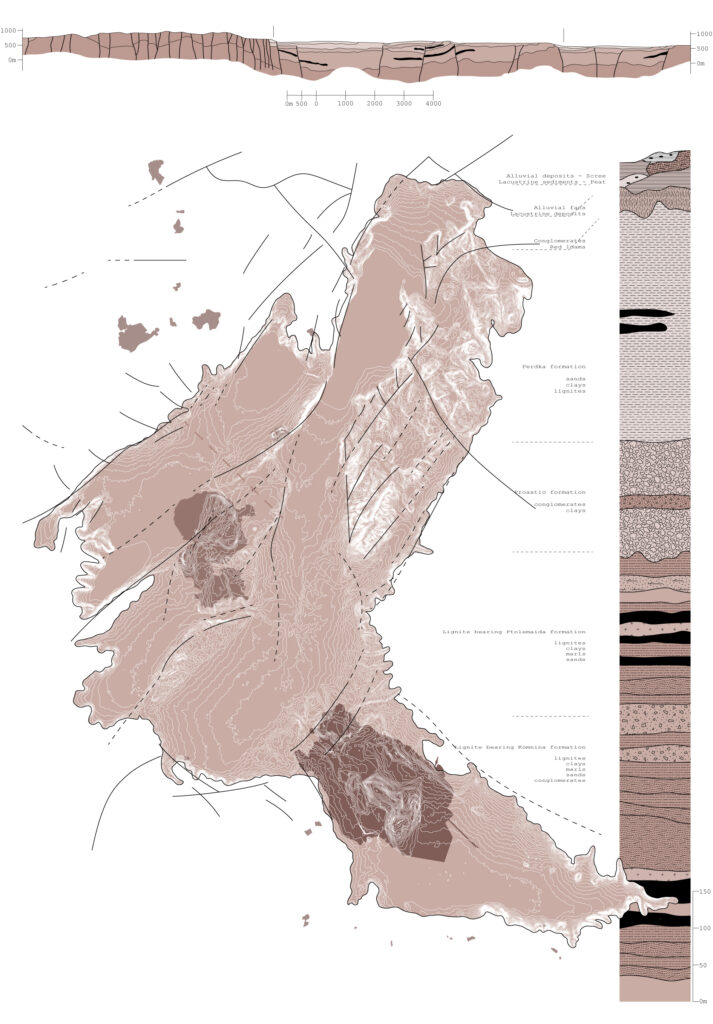66 MILLION YEARS
Lignite deposits of West Macedonia are located in a sedimentary basin, which stretches over 150 kilometres through the territories of Greece and North Macedonia. Its formation began after the ‘Alpine cycle’ ended and is still in progress.[16] Over approximately 66 million years, the sedimentary basins accumulated several layers of lignite due to the gradual sinking of land within fault zones. The collection started in the early Miocene, where several layers of soil were shaped due to tectonic faulting, creating a ‘graben’.[17] This process continued during the late Miocene, filling the graben with sedimentary deposits, which created the first sheet of lignite, the Early Neogene series. The late Pliocene developed the graben into a lacustrine-marshland system, creating a new deposition. This phase is crucial for the Ptolemaida-Amytneo and Kozani basins. It is responsible for creating large lignite deposits in those areas.[18] During the Early-Middle Pleistocene, strong fault tectonism took place, which is responsible for the current configuration of the graben.[19] The last deposition of lignite occurred during the Perdka formation. It was followed by the deposition of the Middle Pleistocene, of one terrestrial formation, creating peat.[20]
West Macedonia was a place for some of the earliest Neolithic settlements. The first farmers inhabited the region of Ptolemaida around 6500 BC. The fertile soils located around Sarigol Swamp allowed for the development of various agricultural activities.
Due to lignite extraction over the last 66 years, numerous evidence of settlements has been found, inter alia on sites of Ponto Komi, Mavropigi, Mikto Nisi Akrinis, Nisi Pontokomis, Kleitos, and Ayiou Dimitriou.[21]
The geological temporality of approximately 66 million years of the Cenozoic era is not only closely interwoven with current events of the region, but also has a direct influence on its becoming. Just as lignite is a composition of sedimentary layers formed during a considerable accumulation of time, West Macedonia and the Fig. of it is equally a fragment of such a ‘crystalline’ structure.

